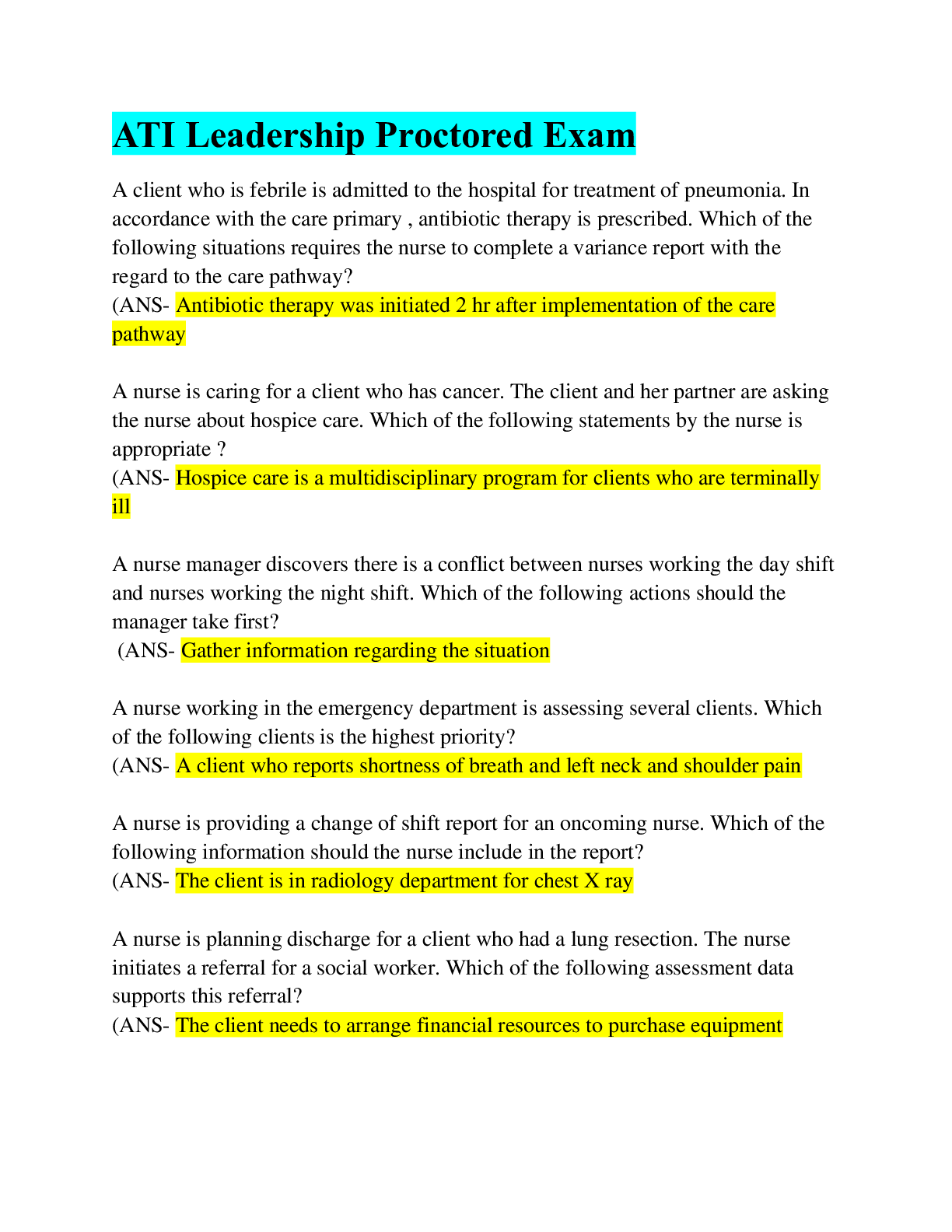Health Care > EXAM > NURS 6560 Midterm Exam (100 Q & A, Year-2020/2021) / NURS 6560N Midterm Exam / NURS6560 Midterm Exam (All)
NURS 6560 Midterm Exam (100 Q & A, Year-2020/2021) / NURS 6560N Midterm Exam / NURS6560 Midterm Exam / NURS-6560N Midterm Exam |Verified Q & A, Includes Latest Exam Set|
Document Content and Description Below
Question 1 S. is a 59-year-old female who has been followed for several years for aortic regurgitation. Serial echocardiography has demonstrated normal ventricular function, but the patient was los... t to follow-up for the last 16 months and now presents complaining of activity intolerance and weight gain. Physical examination reveals a grade IV/VI diastolic aortic murmur and 2+ lower extremity edema to the midcalf. The AGACNP considers which of the following as the most appropriate management strategy? A. Serial echocardiography every 6 months B. Begin a calcium channel antagonist C. Begin an angiotensin converting enzyme (ACE) inhibitor D. Surgical consultation and intervention C. Begin an angiotensin converting enzyme (ACE) inhibitor The patient is having grade 6 diastolic aortic murmur. The murmur is not accompanied by any serious complications because there is a 2+ lower extremity edema to the midcalf. Angiotensin converting enzyme (ACE) inhibitor lowers the blood pressure. High blood pressure often worsens the underlying conditions that cause heart murmurs. Beginning an angiotensin converting enzyme (ACE) inhibitor will help in the management of diastolic aortic murmur by dealing with the conditions that cause heart murmurs. A surgery would be used only when the valves are damaged or leaky Reference https://www.mayoclinic.org/diseases-conditions/heart-murmurs/diagnosis-treatment/drc20373175 Question 2 An ascending thoracic aneurysm of > 5.5 cm is universally considered an indication for surgical repair, given the poor outcomes with sudden rupture. Regardless of the aneurysm’s size, all of the following are additional indications for immediate operation except: A. Comorbid Marfan’s syndrome B. Enlargement of > 1 cm since diagnosis C. Crushing chest pain D. History of giant cell arteritis C. crushing chest pain Prophylactic surgery is recommended when the aorta reaches a diameter of 5.5 cm, when the patient falls under the Marfan syndrome bicuspid aortic valve category, when the enlargement is greater than 0.5 cm, and when the patient has a history of fast-growing cell arteritis. Marfan syndrome is a connective tissue condition that involves the respiratory, skeletal, cardiovascular and ocular systems. It is one of the most serious complication of aortic valve regurgitations and needs an immediate surgery. For this reason, a crushing chest pain is the odd one out Reference https://www.sciencedirect.com/science/article/pii/S235290671500010X Question 3 Jasmine is a 31-year-old female who presents with neck pain. She has a long history of injection drug use and admits to injecting opiates into her neck. Physical examination reveals diffuse tracking and scarring. Today Jasmine has a distinct inability to turn her neck without pain, throat pain, and a temperature of 102.1°F. She appears ill and has foul breath. In order to evaluate for a deep neck space infection, the AGACNP orders: A. Anteroposterior neck radiography B. CT scan of the neck C. White blood cell (WBC) differential D. Aspiration and culture of fluid B. CT Scan of the neck Deep neck space infection may lead to severe and potentially life-threatening complications, such as airway obstruction, mediastinitis, septic embolization, dural sinus thrombosis, and intracranial abscess. In the evaluation of these infections, ultrasonography is the gold standard: 1. to differentiate abscesses from cellulitis 2. for the diagnosis of lymphadenitis However, field-of-view limitation and poor anatomical information confine the use of ultrasonography to the evaluation of superficial lesions and to image-guided aspiration or drainage. Computed tomography (CT) combines fast image acquisition and precise anatomical information without field-of-view limitations. For these reasons, it is the most reliable technique for the evaluation of deep and multi-compartment lesions REFERENCE https://www.ncbi.nlm.nih.gov/pubmed/22964409 Question 4 Mr. Draper is a 39-year-old male recovering from an extended abdominal procedure. As a result of a serious motor vehicle accident, he has had repair of a small bowel perforation, splenectomy, and repair of a hepatic laceration. He will be on total parenteral nutrition postoperatively. The AGACNP recognizes that the most common complications of parenteral nutrition are a consequence of: A. Poorly calculated solution B. Resultant diarrhea and volume contraction C. The central venous line used for infusion D. Bowel disuse and hypomotility C. The central venous line used for infusion Total parenteral nutrition is the administration of nutritional components via the venous system rather than the enteral route/gastrointestinal tract. It can be total or partial where just a selected number of nutrients are given This type of nutrient administration comes with a myriad of challenges as a result of the many complications associated with it. Among the complications the most common is infection which commonly results from the central venous line used. The contamination of the blood stream is with normal skin flora around the cannulation site, commonly staphylococcus organisms The other complications include: 1. Dehydration and electrolyte Imbalances due to inadequate intake 2. Venous thrombosis 3. Hyperglycemia (high blood sugars) 4. Hypoglycemia (low blood sugars) 5. Micro-nutrient deficiencies (vitamin and minerals) Question 5 Mr. Mettenberger is being discharged following his hospitalization for reexpansion of his second spontaneous pneumothorax this year. He has stopped smoking and does not appear to have any overt risk factors. While doing his discharge teaching, the AGACNP advises Mr. Mettenberger that his current risk for another pneumothorax is: A. < 10% B. 25-50% C. 50-75% D. > 90 B. 25-50% Having one pneumothorax increases the chances for a second and third. Mr. Mettenberger has been discharge but no surgical intervention was employed to reduce the odds for a second. He was hospitalized for expansion of his second spontaneous pneumothorax. While he has stopped smoking and does not appear to have any overt risk factors, there is still a 25-50% likelihood of having a third attack because there is no surgical intervention. His current risk for another pneumothorax is 25-50% Reference https://www.ncbi.nlm.nih.gov/pmc/articles/PMC1758641/ https://www.merckmanuals.com/home/lung-and-airway-disorders/pleural-and-mediastinaldisorders/pneumothorax Question 6 One of the earliest findings for a patient in hypovolemic shock is: A. A drop in systolic blood pressure (SBP) < 10 mm Hg for > 1 minute when sitting up B. A change in mental status C. SaO2 of < 88% D. Hemoglobin and hematocrit (H&H) < 9 g/dL and 27% D. Hemoglobin and hematocrit (H & H) <9 g/dL and 27%. Hypovolemic shock occurs due to excessive blood loss, either through hemorrhage or internal bleeding. As blood is lost, hemoglobin is also lost, thus the hemoglobin levels will fall. The normal hemoglobin levels in an adult ranges from 12 - 17.5 g/DL while the normal hematocrit level ranges from 36% - 54%. In hypovolemic shock, the hemoglobin can fall to <9g/dL and the hematocrit can fall to 27%. The blood pressure is likely to fall more than 10mmgHg. The little blood left will be preferably channelled to the brain and the heart thus mental status will not be affected until much later. Question 7 Traumatic diaphragmatic hernias present in both acute and chronic forms. Patients with a more chronic form are most likely to be present with: A. Respiratory insufficiency B. Sepsis C. Bowel obstruction D. Anemia B. Sepsis Patients with more chronic traumatic diaphragmatic hernias are most likely to present with sepsis. Chronic traumatic diaphragmatic hernias can cause bloodstream infections. Additionally, chronic traumatic diaphragmatic can trigger ventilator-associated pneumonia (VAT). Ventilator-Associated pneumonia can trigger the body to release chemicals into the bloodstream to fight the infections. As a consequence, the body's response to the bloodstream infections and ventilator-associated pneumonia can be out of balance. When the body's response to the chemicals is out of balance, the condition that occurs is sepsis References https://www.mayoclinic.org/diseases-conditions/sepsis/symptoms-causes/syc-20351214 https://www.ncbi.nlm.nih.gov/pmc/articles/PMC5359267/ https://www.ncbi.nlm.nih.gov/pmc/articles/PMC3527804/ Question 8 The AGACNP is managing a patient in the ICU who is being treated for a pulmonary embolus. Initially the patient was stable, awake, alert, and oriented, but during the last several hours the patient has become increasingly lethargic. At change of shift, the oncoming staff nurse appreciates a profound change in the patient’s mental status from the day before. Vital signs and hemodynamic parameters are as follows: BP 88/54 mm Hg Pulse 110 bpm Respiratory rate 22 breaths per minute SaO2 93% on a 50% mask Systemic vascular resistance (SVR) 1600 dynes ∙ sec/cm5 Cardiac index 1.3 L/min Pulmonary capillary wedge pressure (PCWP) 8 mm Hg This clinical picture is most consistent with which shock state? A. Hypovolemic B. Cardiogenic C. Distributive D. Obstructive C. Distributive This clinical picture is most consistent with distributive shock state. The vital signs and hemodynamic parameters make distributive shock as the likely shock state. The cardiac features of distributive shock include; a respiratory rate that is greater than 20 breaths per minute, increased pulse pressure, heart rate greater than 90 beats per minute, systolic blood pressure less than 90mmHg , and vascular resistance. The patient has a respiratory rate of 22 breaths per minute, and BP of 88/54mmHg Pulse. For this reason, this clinical picture is consistent with distributive shock state References https://emedicine.medscape.com/article/168689-clinical#b3 https://www.medscape.com/answers/168402-27289/what-are-the-causes-and-signs-ofdistributive-shock Question 9 When counseling patients to prevent postoperative pulmonary complications, the AGACNP knows that with respect to smoking cessation, the American College of Surgeons and National Surgical Quality Improvement Program guidelines are clear that patients who stop smoking _____ weeks before surgery have no increased risk of smoking related pulmonary complications. A. 2 B. 4 C. 6 D. 8 Question 10 Mitch C. is a 39-year-old male who is brought to the ED by paramedics. According to the report of a neighbor, Mitch was distraught over a breakup with his fiancée and attempted to commit suicide by mixing some chemicals from under his kitchen sink and drinking them; afterward he changed his mind and knocked on his neighbor’s door asking for help. Mitch is awake but stuporous, and the neighbor has no idea what he drank. Visual inspection of his mouth and oropharynx reveals some edema and erythema. He is coughing and has large amounts of pooling saliva. Mitch is not capable of answering questions but he appears in pain. Endoscopy reveals full thickness mucosal injury with mucosal sloughing, ulceration, and exudate. The AGACNP knows that the appropriate course of treatment must include: A. At least 6 hours of observation in the emergency department B. Periodic esophagram C. Aggressive fluid resuscitation D. Esophagogastrectomy A. At least 6 hours of observation in the emergency department Patients who present at the emergency department due to poisoning, should be kept under observation for a minimum of 6 hours. Their stay in the emergency department could be as long as 72 hours. Esophagram is contraindicated in patients with ulcerations such as seen in Mitch C. Thus, period esophageal should not be performed on Mitch C. Fluid resuscitation should not be done for her since it can worsen her edema. Also, esophagoastrectomy is too radical and unnecessary for Mitch C since her poisoning burns are only as deep as the epithelial mucosa and can heal with medication. The correct option is thus: A. At least 6 hours of observation in the emergency department Question 11 Jared V. is a 35-year-old male who presents for evaluation of a dry cough. He reports feeling well overall but notices that he gets out of breath more easily than he used to when playing soccer. A review of systems yields results that are essentially benign, although the patient does admit to an unusual rash on his legs. Physical examination reveals scattered erythematous nodules on both shins. There is no drainage, discomfort, or itch. Additionally, diffuse, mildly enlarged lymph nodes are appreciated bilaterally. Results of a comprehensive metabolic panel and complete blood count are within normal limits. Twelve-lead ECG reveals sinus bradycardia at 58 bpm. Chest radiography reveals bilateral hilar and mediastinal lymphadenopathy. The AGACNP suspects: A. Bronchiectasis B. Pulmonary fibrosis C. Sarcoidosis D. Lung carcinoma C. Sarcoidosis Sarcoidosis is an inflammatory condition that affects various parts of the body especially the lungs and lymph nodes. It is the most common cause of bilateral hilar and mediastinal lymphadenopathy. The symptoms of sarcoidosis include: dry cough, shortness of breath, chest pain and a rash known as erythema nodosum. Signs elicited on physical examination can include: bradycardia, lymph node enlargement and erythematous nodules. From the medical history and physical examination findings consistent with the above signs and symptoms, the AGACNP suspects that Jared has Sarcoidosis. Question 12 Mrs. Miller is a 44-year-old female who is on postoperative day 1 following a total abdominal hysterectomy. Her urine output overnight was approximately 200 mL. The appropriate response for the AGACNP would be to order: A. A urinalysis and culture B. 1 liter of NSS over 8 hours C. Encourage increased mobility D. Liberalize salt in the diet A. Urinalysis and culture The patient's urinary output is really low and this needs urinalysis and culture to diagnose the condition that is causing a low urinary output. Urinalysis and culture will help in the detection of bacteria and urinary tract infections. The urinalysis and culture will help in the examination of the kidney functioning. Urinalysis and culture need to be done before the other steps can be recommended References https://www.mdcalc.com/urine-output-fluid-balance https://www.msdmanuals.com/home/kidney-and-urinary-tract-disorders/diagnosis-of-kidneyand-urinary-tract-disorders/urinalysis-and-urine-culture Question 13 All of the following are risk factors for spontaneous pneumothorax except: A. Connective tissue disease. B. Scuba diving C. Chronic obstructive pulmonary disease (COPD) D. Central line insertion B. Scuba diving Scuba diving is not one of the risk factors for spontaneous pneumothorax because the divers carry a self-contained underwater breathing apparatus. The self-contained underwater breathing apparatus (scuba) is independent from the sur [Show More]
Last updated: 1 year ago
Preview 1 out of 63 pages

Reviews( 0 )
Document information
Connected school, study & course
About the document
Uploaded On
Aug 11, 2022
Number of pages
63
Written in
Additional information
This document has been written for:
Uploaded
Aug 11, 2022
Downloads
0
Views
56


.png)
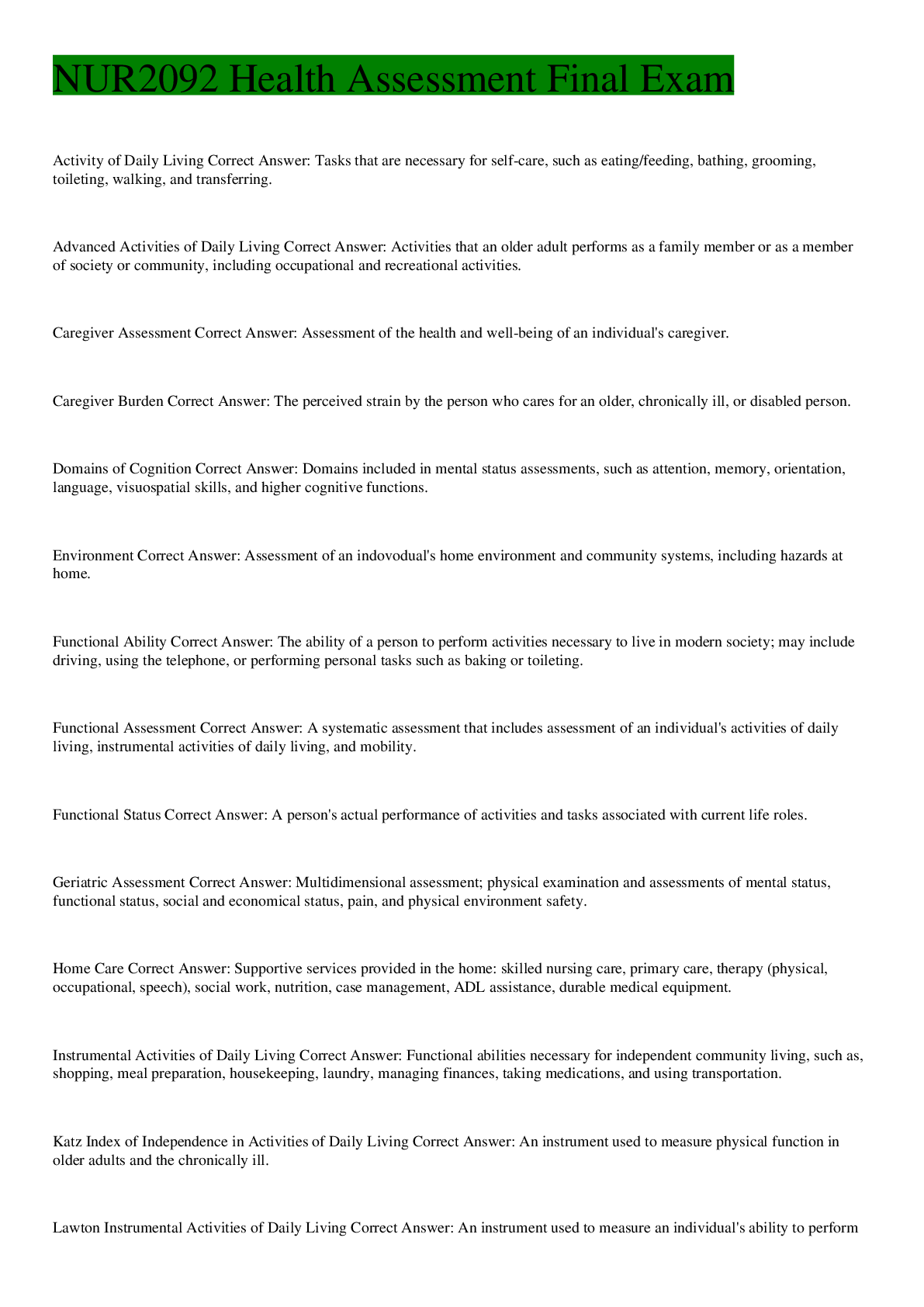
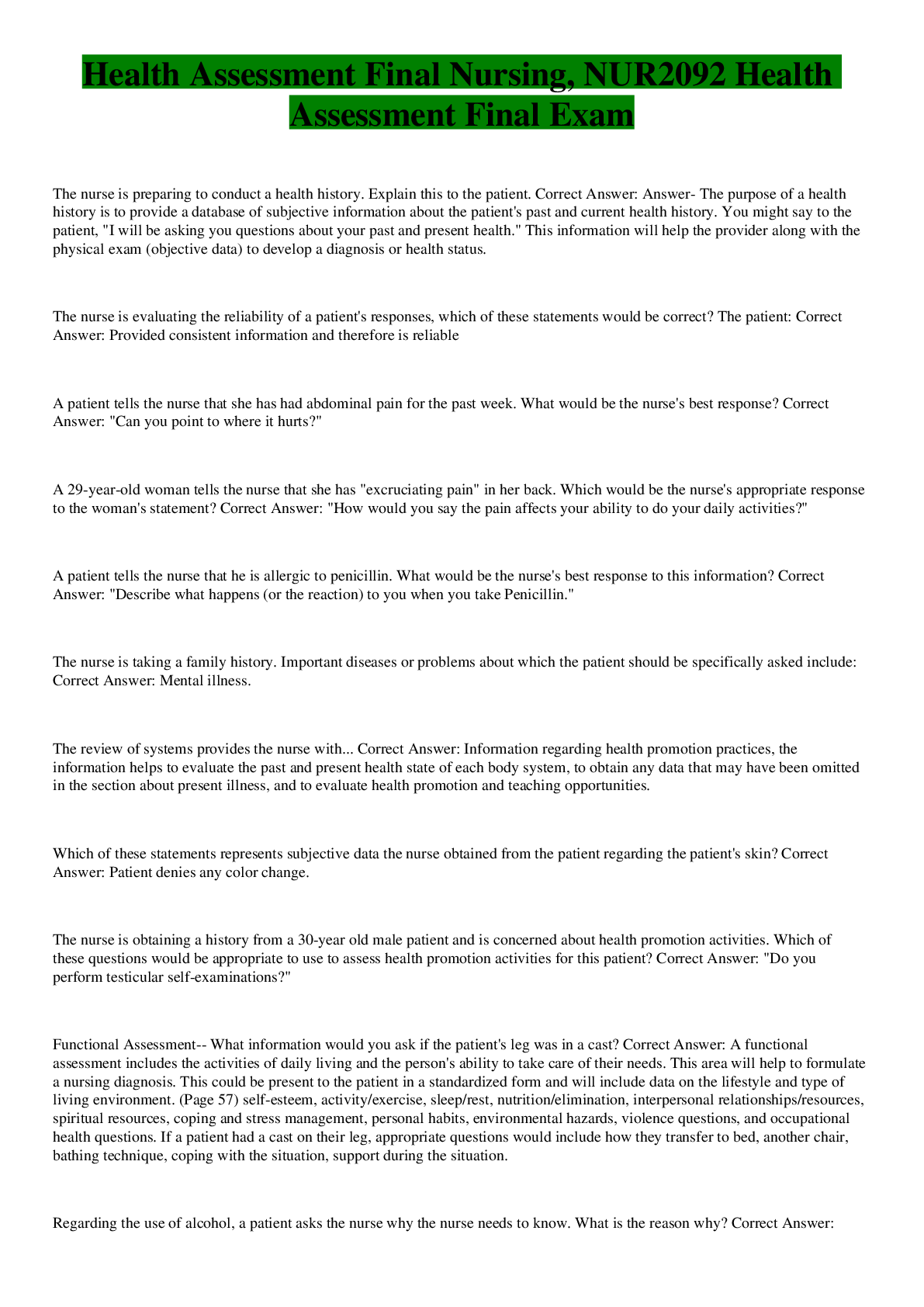



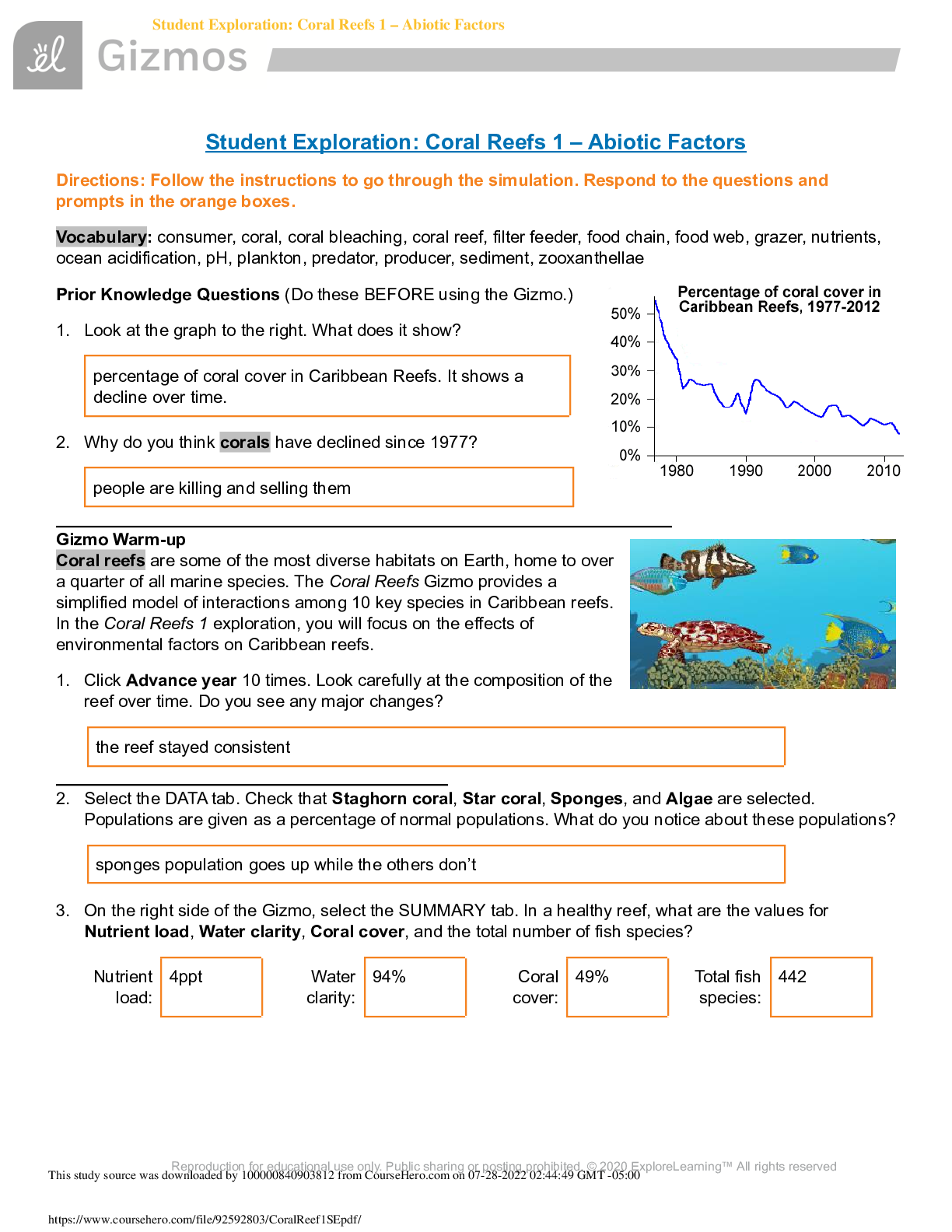
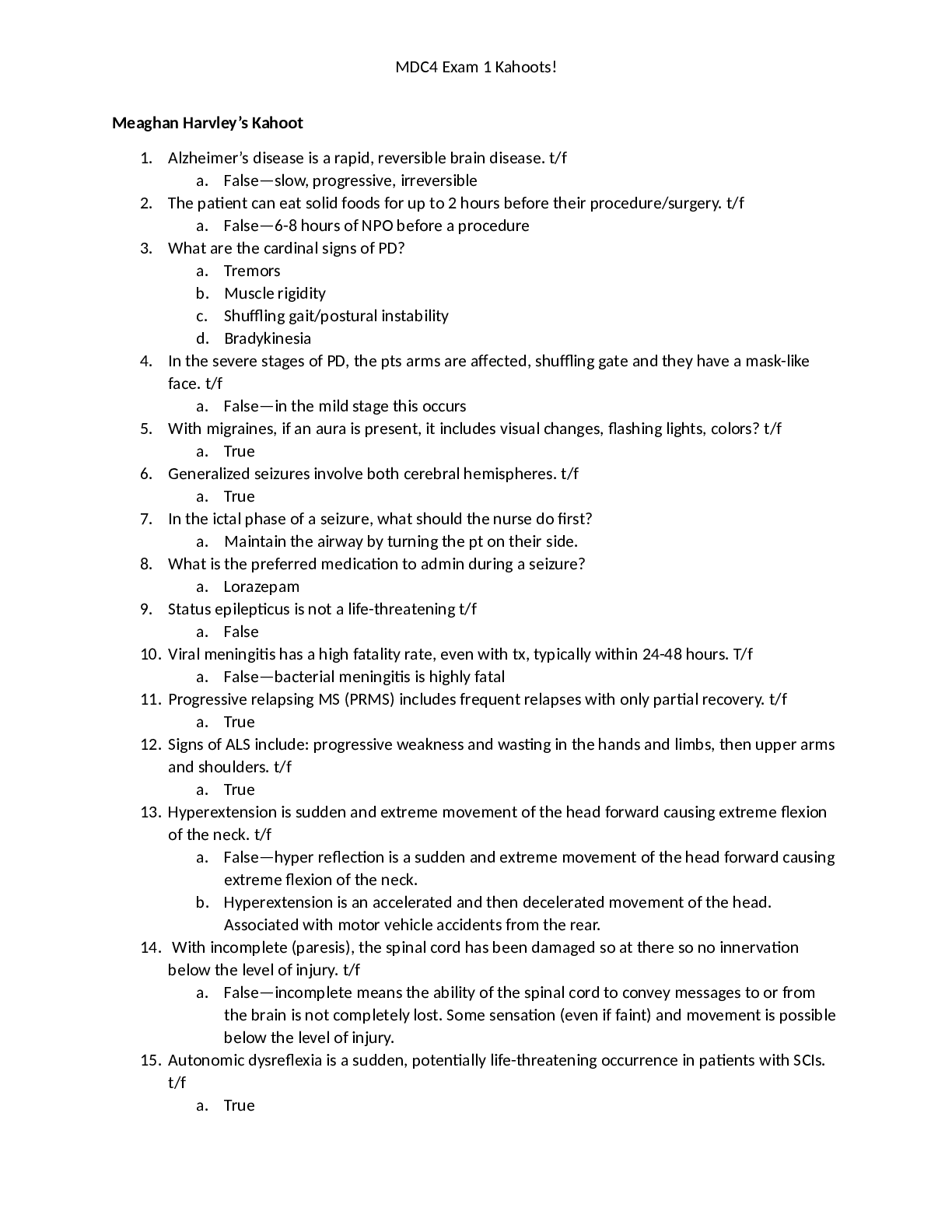
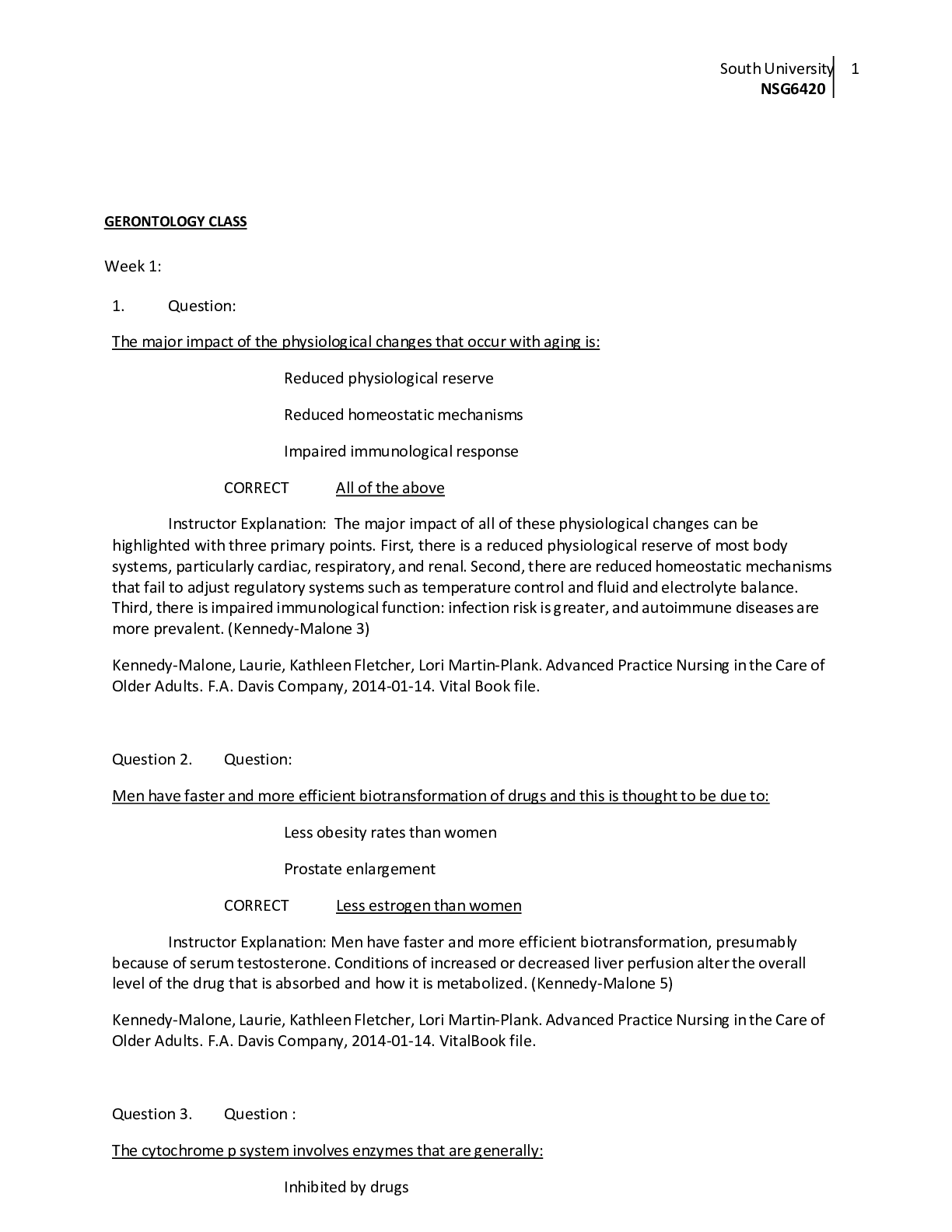
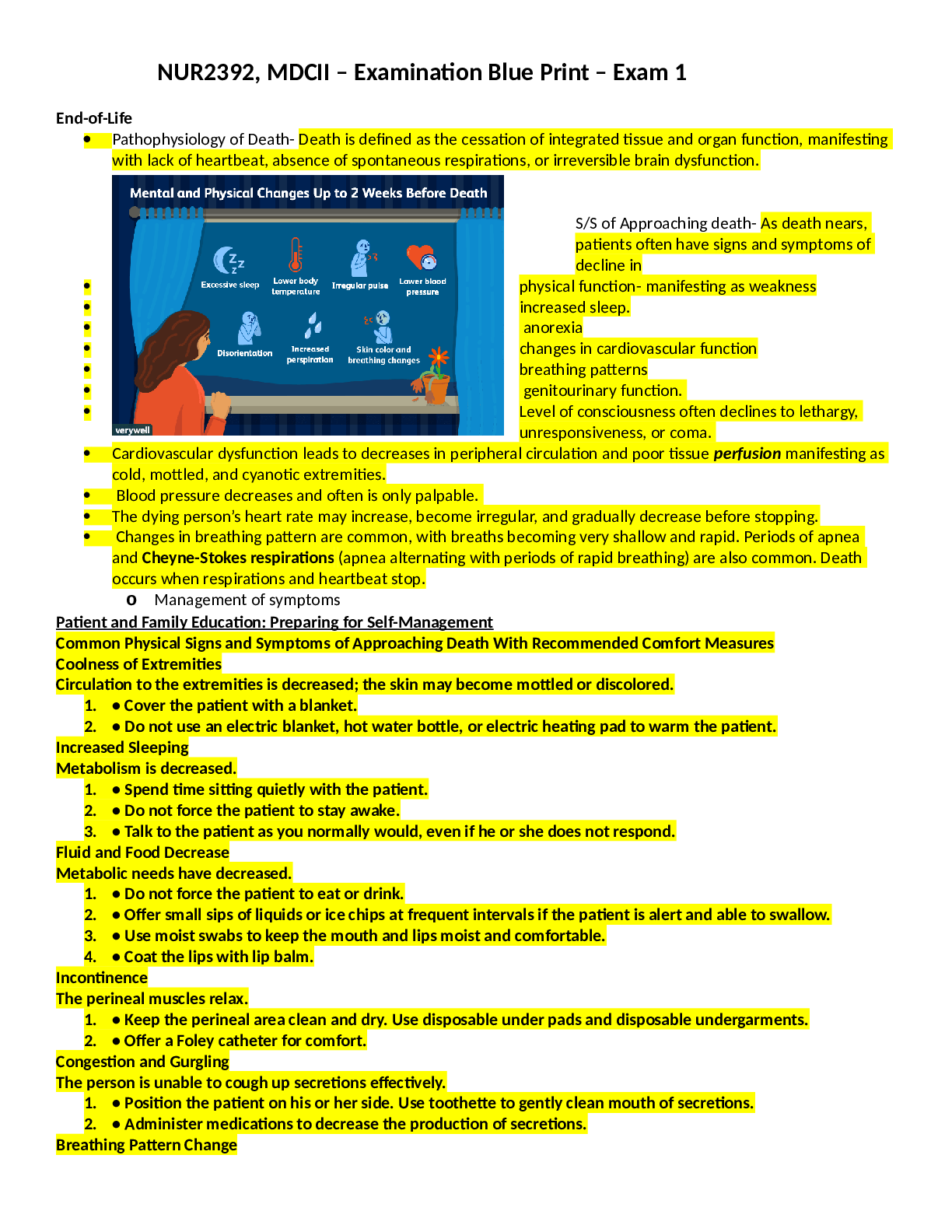
 (1).png)
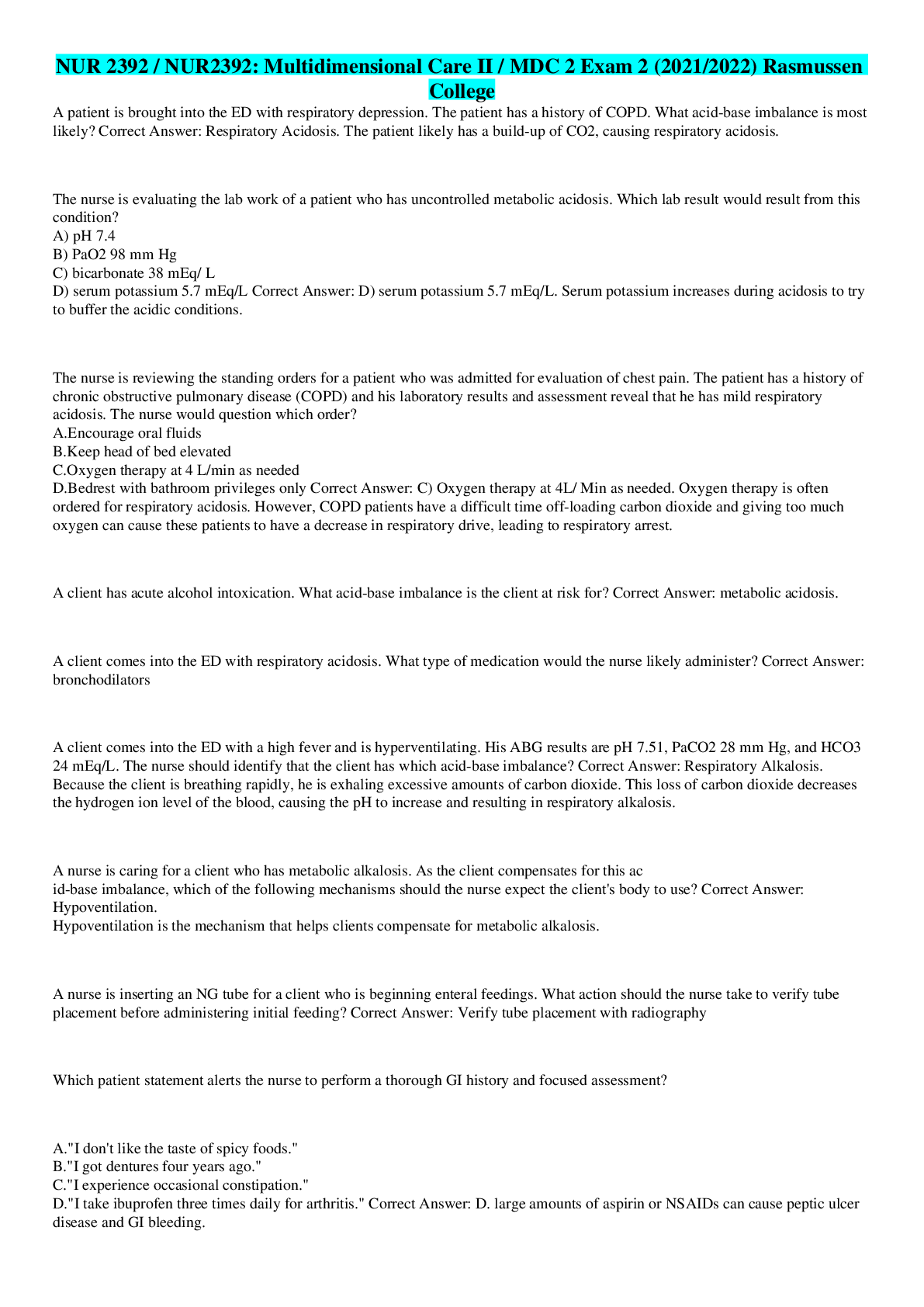

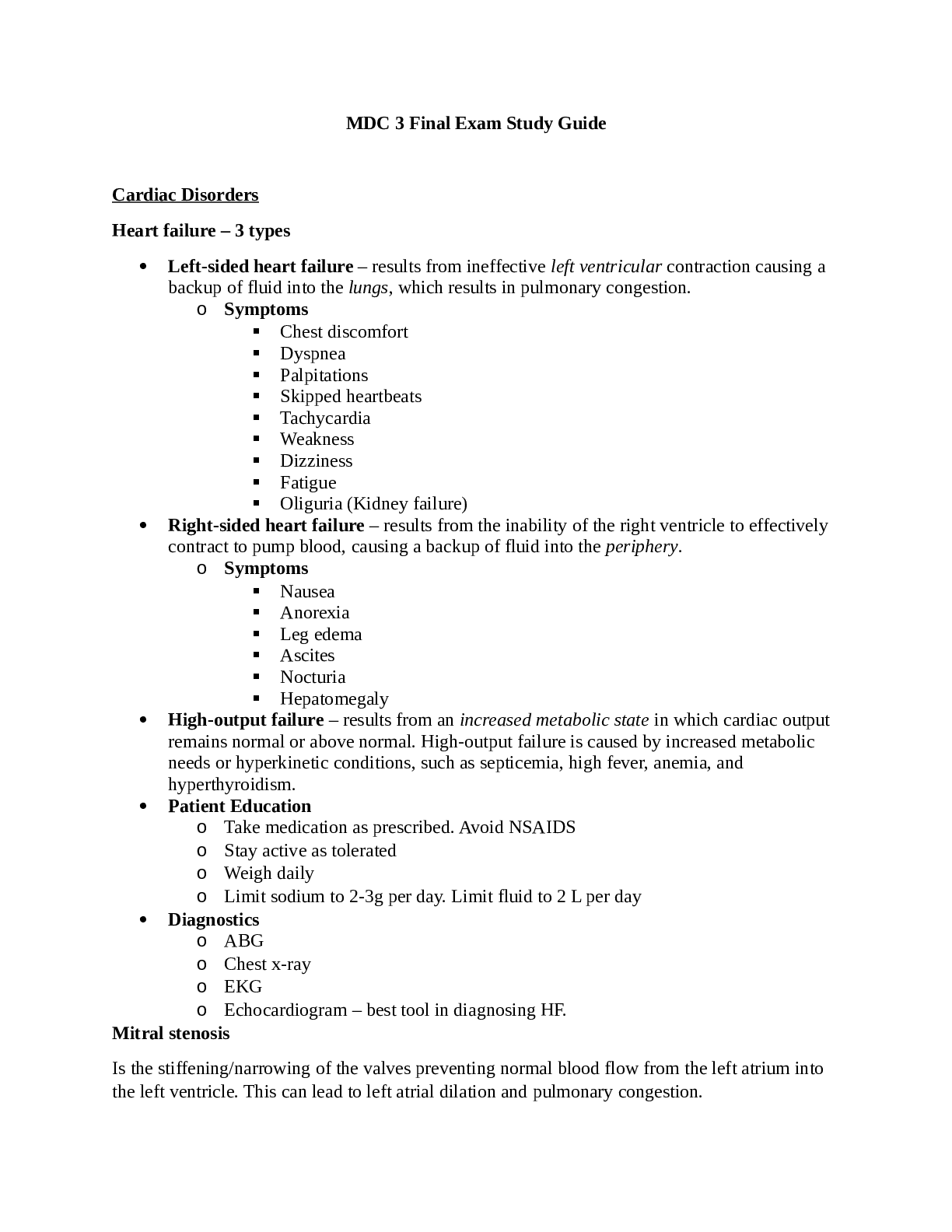



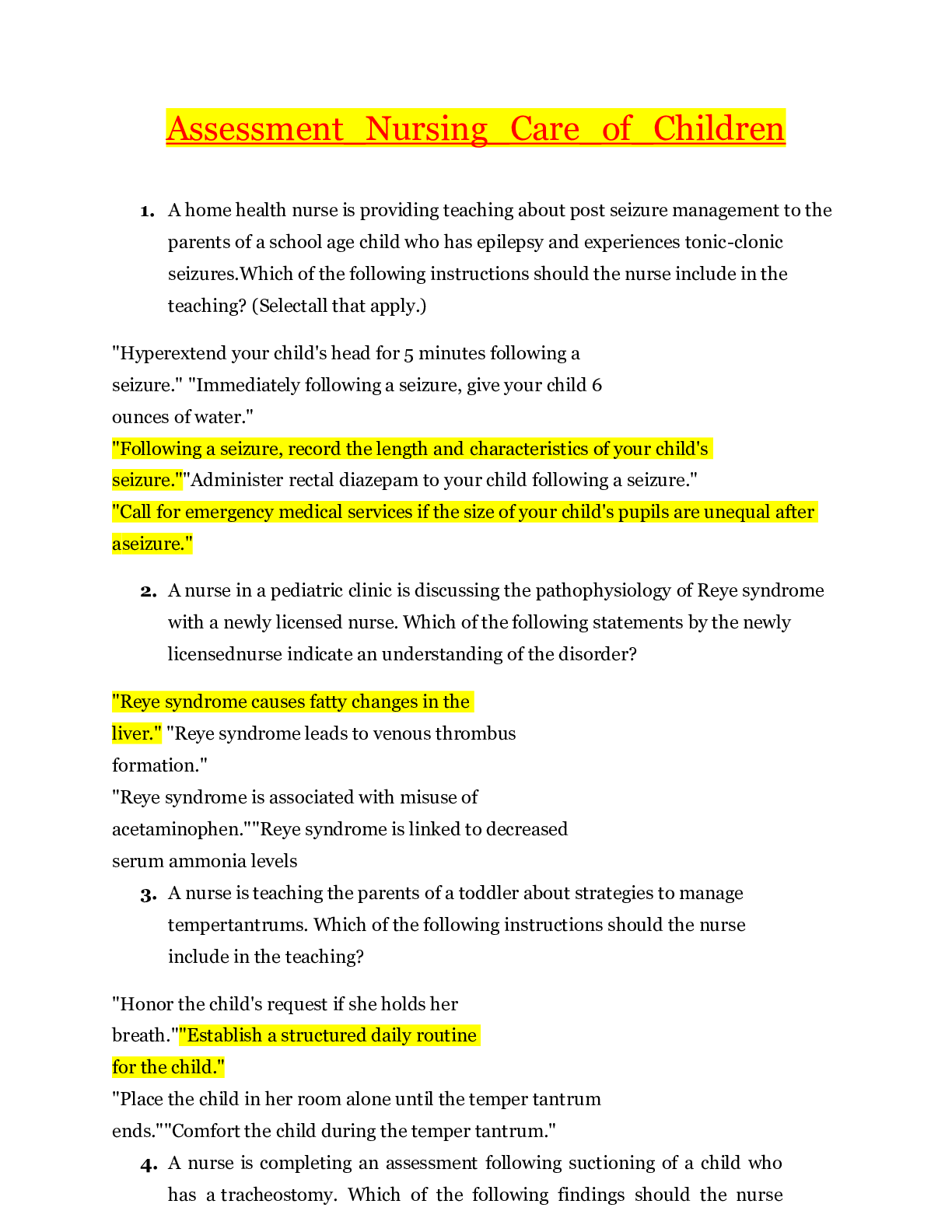
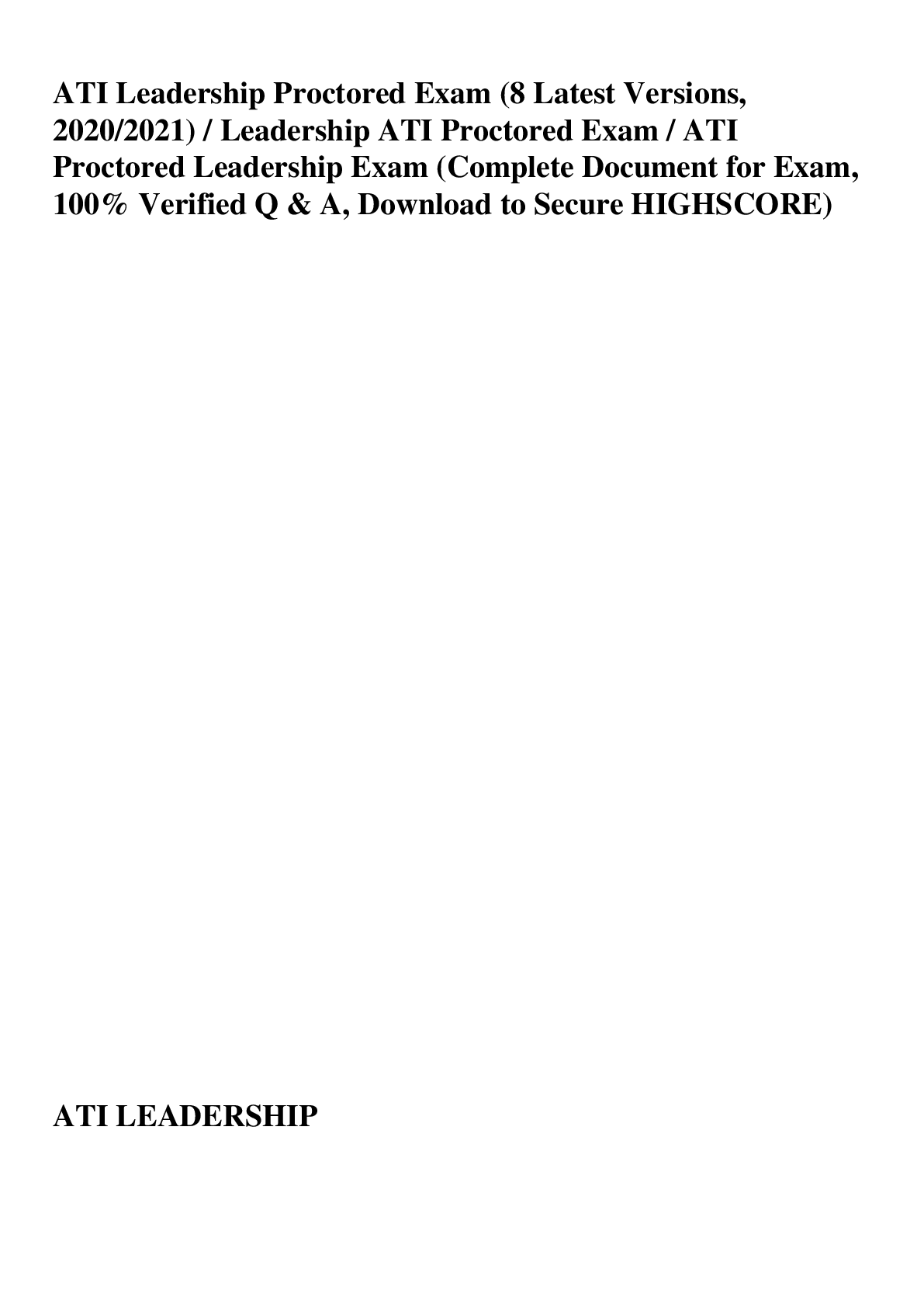

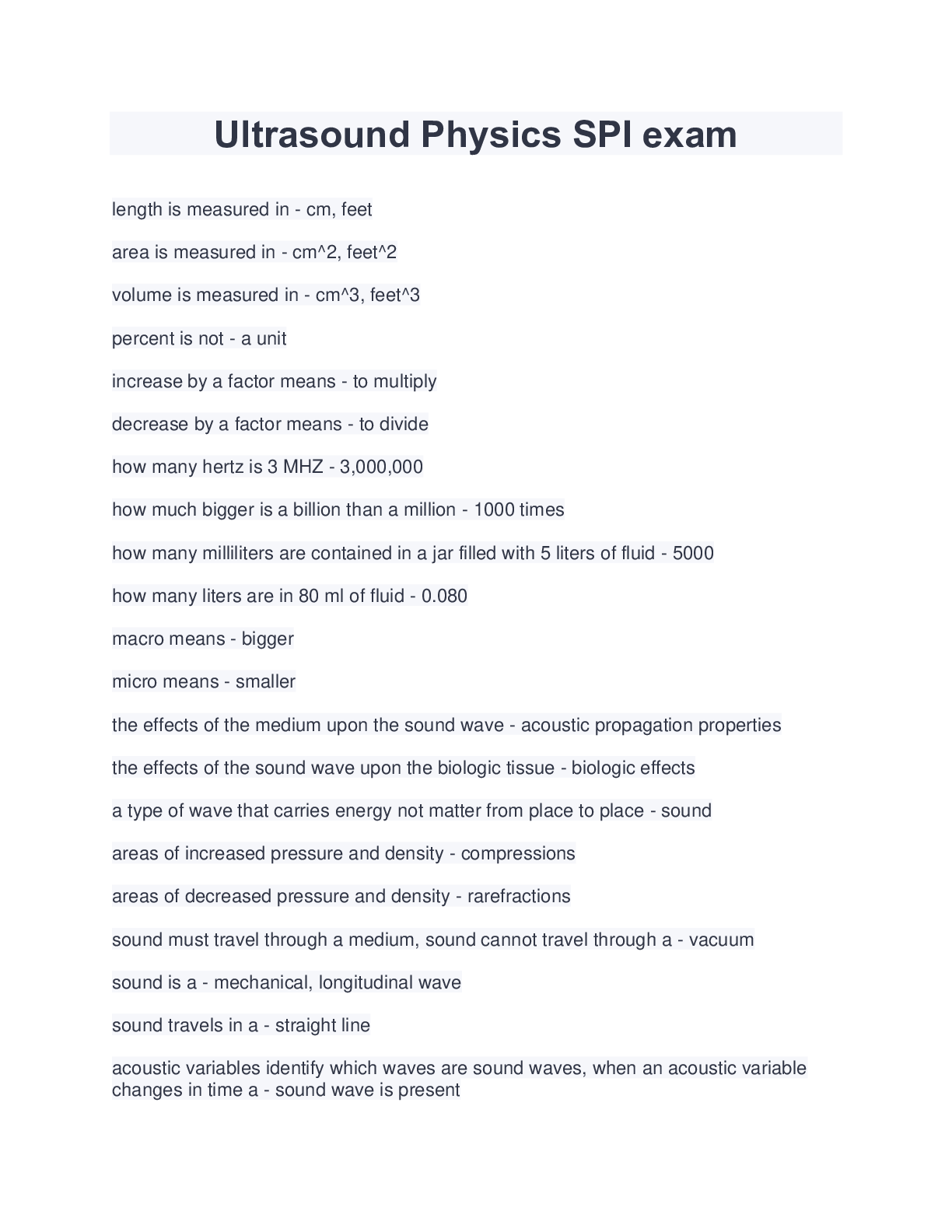
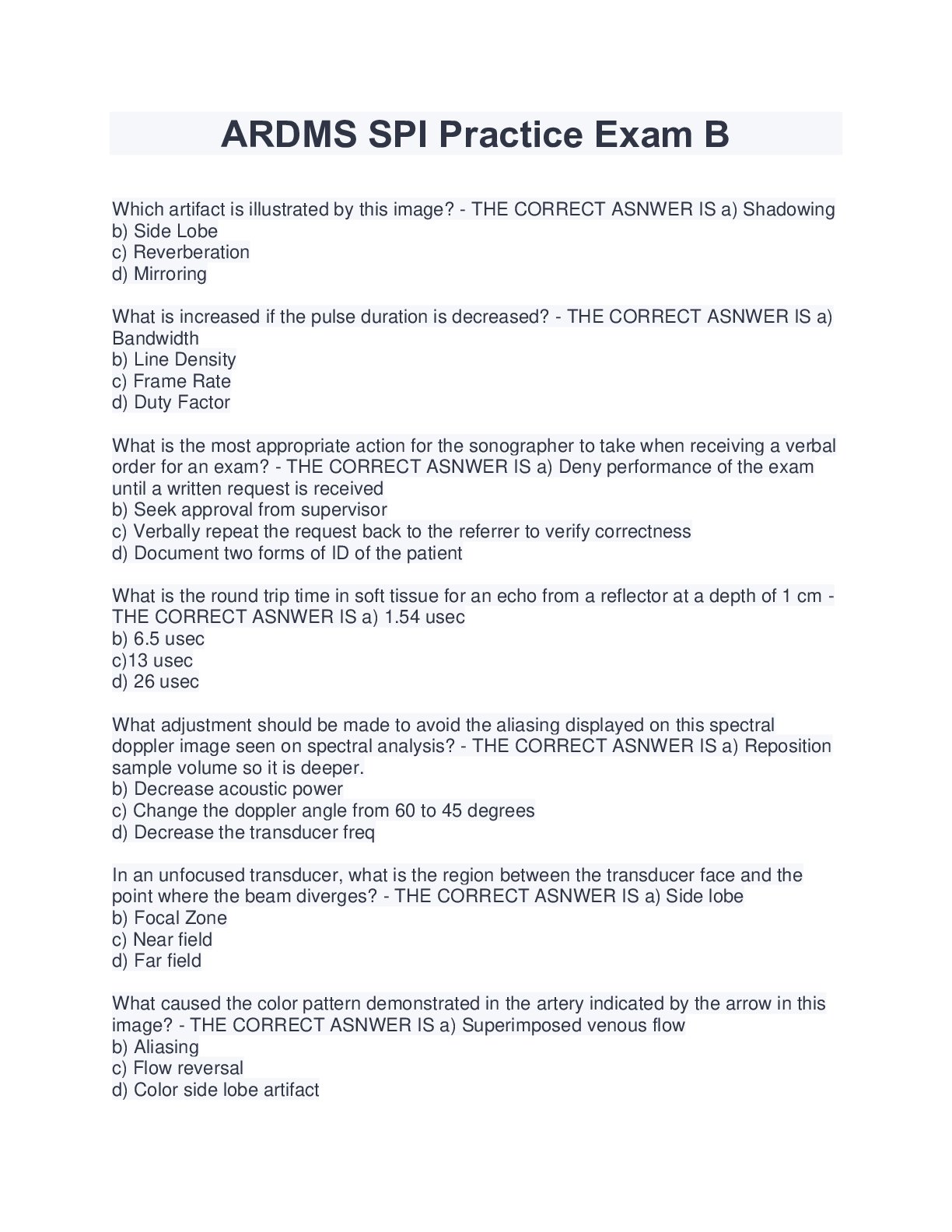
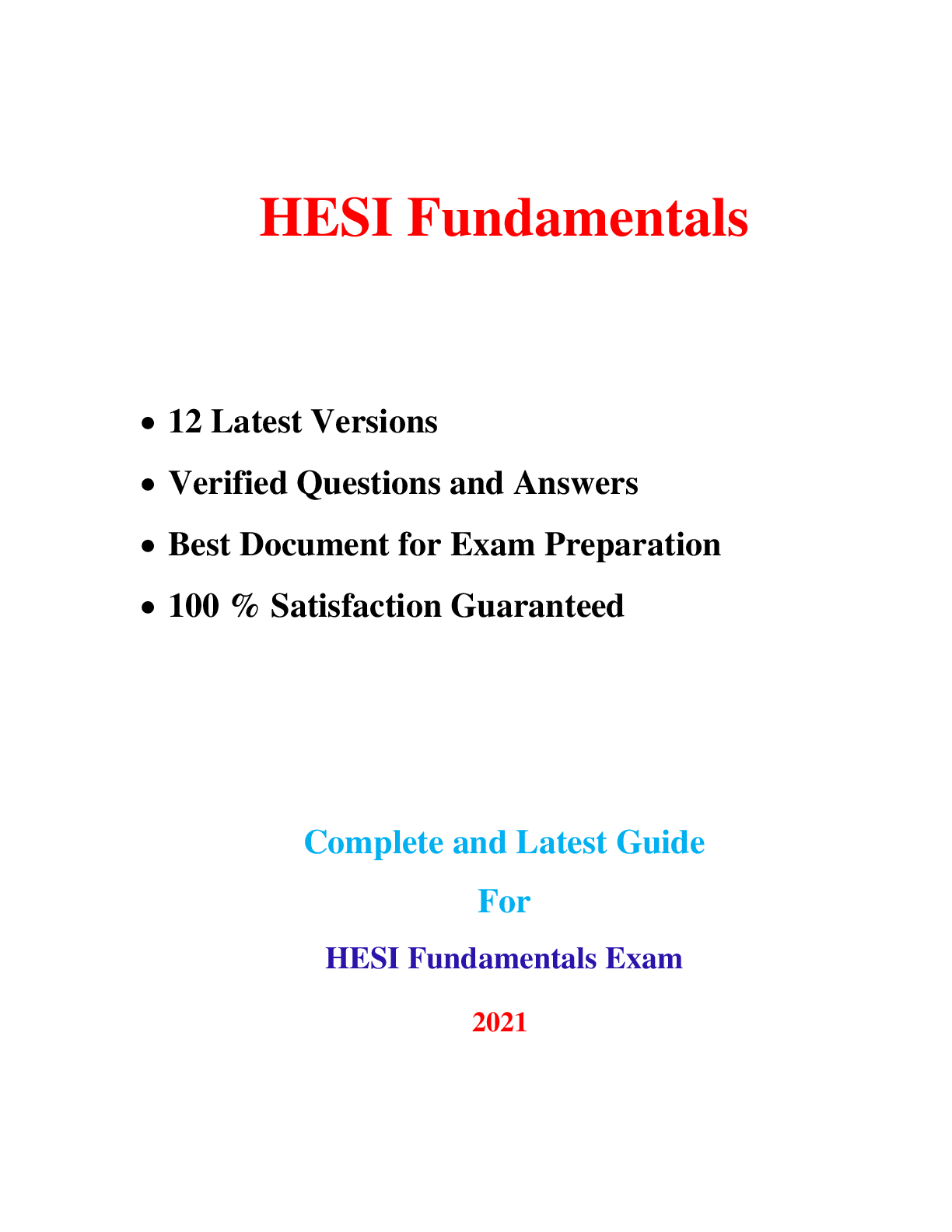

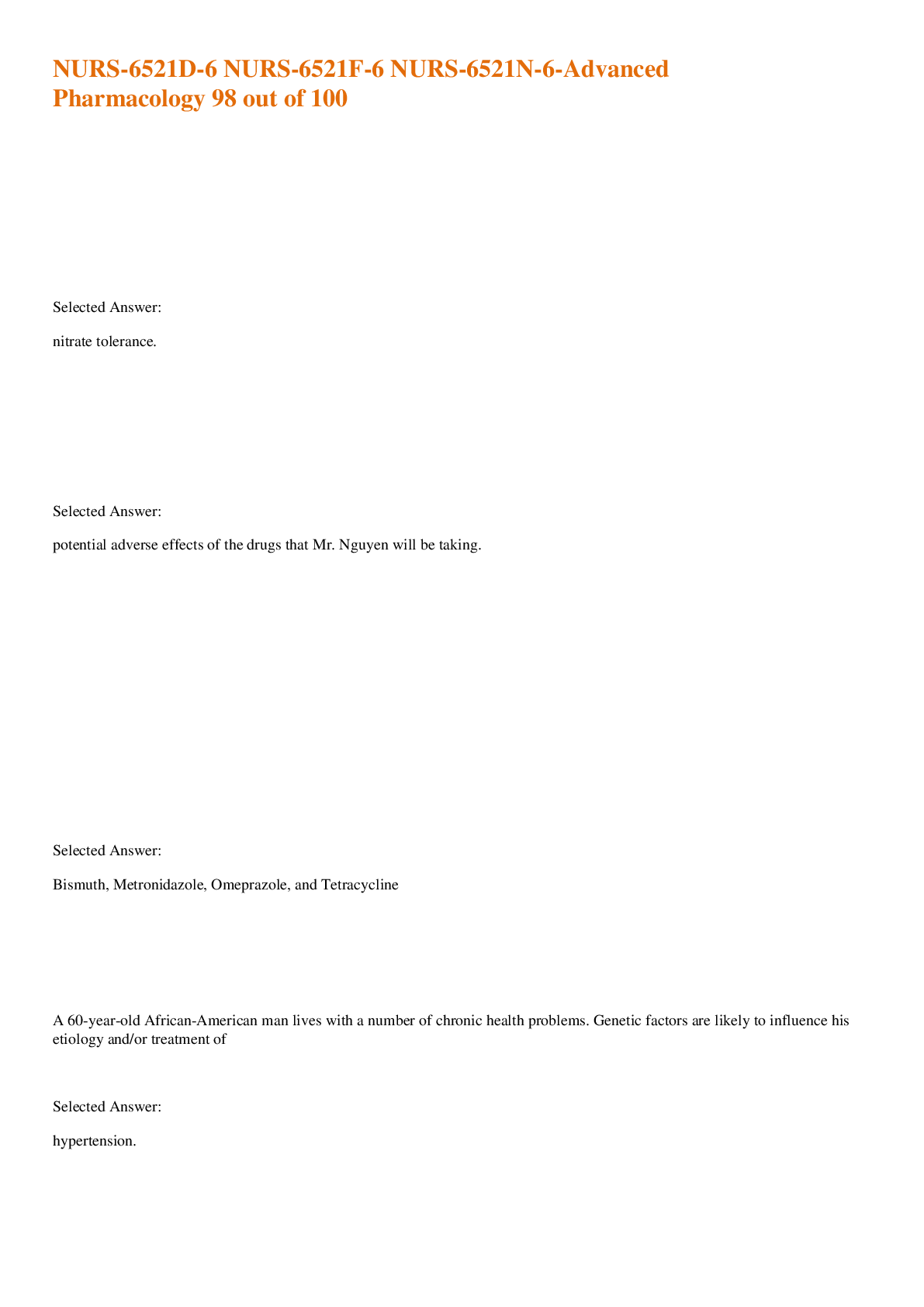
.png)

.png)
